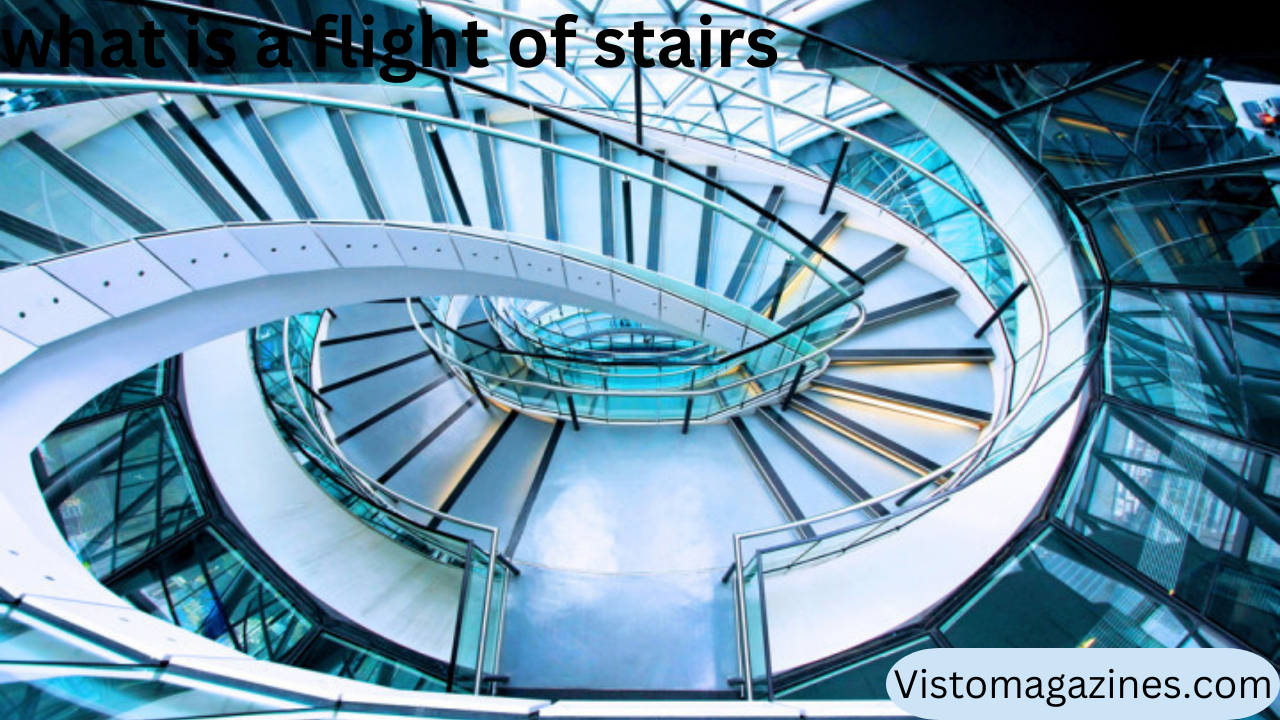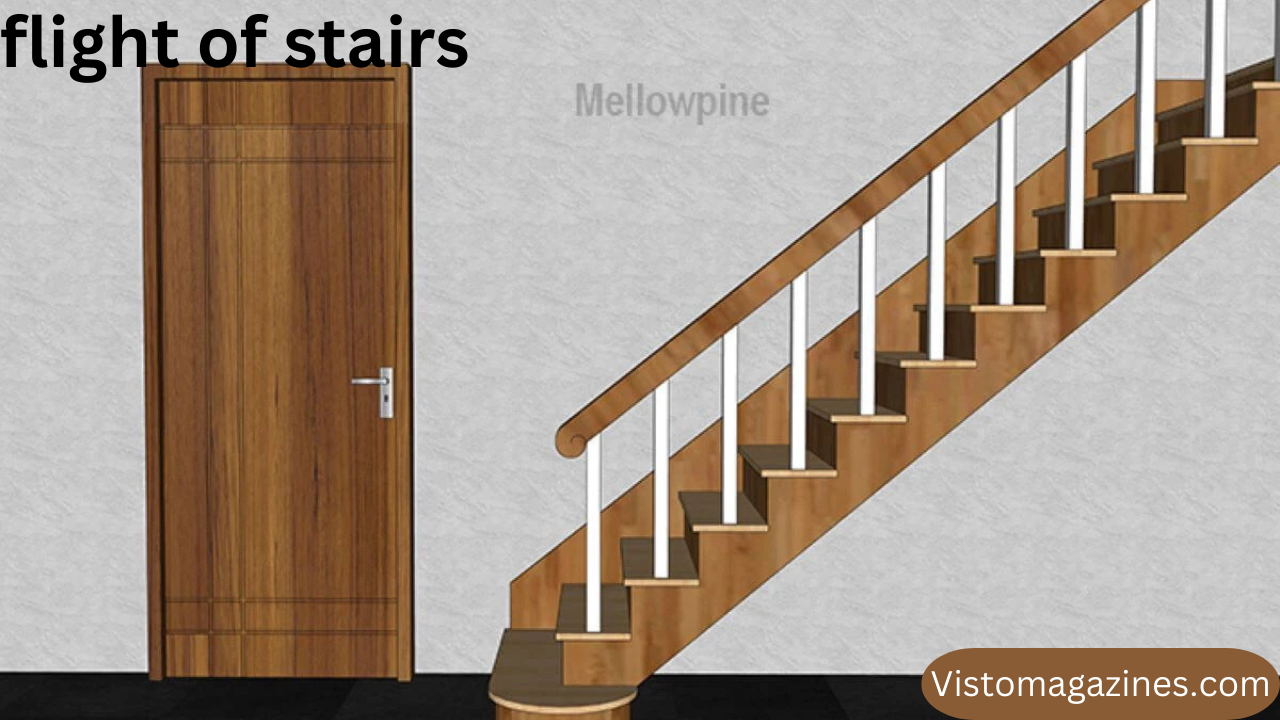What is a Flight of Stairs? Understanding the Concept and Importance of a Flight of Stairs
A flight of stairs is one of the most common architectural features in buildings, both residential and commercial. It serves as a practical means of moving between different levels or floors. But what exactly does the term “flight of stairs” mean? In this article, we will explore the concept in depth, explain the different types, their design, and their importance in construction, and discuss safety measures associated with them.
What Exactly is a Flight of Stairs?
A flight of stairs is a continuous set of steps connecting two floors of a building, designed to help people move from one level to another. In simple terms, it is the segment of stairs between two landings or the part of a staircase that is uninterrupted by any break or turn. While the term “flight” suggests movement or travel, it refers specifically to the vertical distance traversed by these steps.
Typically, a flight of stairs includes several steps, and it might either be straight or involve turns, depending on the design of the building. In most cases, it connects ground level to an upper floor or a higher level, making it a fundamental part of vertical circulation within a structure.
The Components of a Flight of Stairs
A flight of stairs comprises several key components, each contributing to its function and design. These include:
Steps
Each step consists of a tread (the part you step on) and a riser (the vertical part between the treads). The tread provides a flat surface to step on, while the riser determines the height between each step. The size and dimensions of both treads and risers are carefully designed for comfort, ease of use, and safety.
Handrails
Handrails are often placed along the sides of a flight of stairs to provide stability and support for those ascending or descending. They are particularly important for individuals with mobility challenges and for preventing falls.
Landing
A landing is a flat platform located at the top or bottom of a flight of stairs, providing a break between two sections of stairs or allowing people to change direction. In buildings with multiple floors, landings are used to provide access to each level. A landing can also serve as a resting place for people who may need to take a break while navigating multiple flights.
Stringers
The stringers are the structural supports of the flight of stairs. These are typically long, inclined beams that support the steps and help hold them in place. The stringers ensure the flight of stairs is sturdy and secure. There are usually two or more stringers in a staircase, one on either side, and sometimes in the middle for added support.
Types of Flights of Stairs
Flights of stairs can vary greatly depending on the building’s design, intended use, and the space available. Some of the most common types of stairs include:
Straight Staircases
A straight staircase is the simplest and most common form of a flight of stairs. It consists of a single, uninterrupted series of steps running straight from one floor to the next. Straight staircases are easy to build and are often used in homes and offices.
L-Shaped Stairs
L-shaped stairs feature a 90-degree turn at the top of the flight or partway through. This turn can either be at the landing or achieved by using winders, which are steps that have a slightly diagonal shape to facilitate the turn. L-shaped stairs are frequently used in compact spaces, as they offer better space efficiency compared to straight staircases.
U-Shaped Stairs
U-shaped stairs are more complex and involve two straight flights that are connected by a landing, creating a 180-degree turn. These are often used in larger homes or commercial buildings, as they provide a more efficient way to navigate between floors without taking up as much horizontal space.
Spiral Staircases
A spiral staircase consists of steps that wind around a central axis, forming a circular or helical shape. This type of staircase is space-saving and often used in places where there is limited room, such as in lofts or narrow hallways. Although aesthetically pleasing, spiral staircases can be tricky to navigate, especially for people with mobility issues.
Curved Staircases
Curved stairs follow a gentle arc, unlike spiral stairs, which have a sharp, circular design. Curved staircases are more elegant and often seen in high-end homes, public buildings, and museums. These stairs require more space for construction but offer a visually appealing and smooth transition between floors.
Importance of a Flight of Stairs in Architecture
Flights of stairs are more than just a means of getting from one level to another. They serve several important functions in architecture and construction.
Space Efficiency
In multi-story buildings, particularly in urban environments where space is limited, a flight of stairs can be a more efficient way to provide access between floors than elevators or escalators. Stairs can be integrated into smaller spaces and offer a more compact solution than other vertical transportation systems.
Safety
A well-designed flight of stairs ensures that people can move between floors safely. Properly calculated tread and riser measurements, along with handrails and guardrails, help prevent accidents. For people with limited mobility, features such as wider steps and accessible handrails make it easier to use stairs without risk.
Aesthetic Appeal
Stairs can also contribute to the overall design and aesthetic appeal of a building. Whether it’s a grand staircase in a historic mansion or a sleek, modern staircase in a contemporary home, stairs often become a focal point of interior design. Their materials, shape, and design can add elegance and character to a space.
Accessibility
While stairs are an essential part of most buildings, it’s important to consider accessibility for people with disabilities or other mobility challenges. In modern architecture, stairs are often designed alongside ramps or lifts to ensure that everyone can safely and easily move between floors.
Safety Features of a Flight of Stairs
Safety is a critical consideration when designing a flight of stairs. Improperly designed stairs can lead to accidents, injuries, or even fatalities. To ensure a flight of stairs is safe to use, several guidelines should be followed.
Proper Dimensions
The dimensions of the steps—specifically, the tread and riser—should be carefully measured. The tread should be wide enough to accommodate a person’s foot, while the riser should not be too high to prevent difficulty in ascending or descending. Generally, a tread length of around 10 inches and a riser height of 7 to 8 inches is considered comfortable and safe.
Clear Lighting
Adequate lighting is essential for any flight of stairs to ensure people can see each step clearly, especially in low-light environments. Proper illumination reduces the risk of tripping and falling.
Handrails and Guardrails
Handrails are crucial for helping people maintain balance while navigating stairs, especially when carrying items or in high-traffic areas. Guardrails along the sides of stairs can prevent falls and provide added protection.
Anti-Slip Materials
To further reduce the risk of slips and falls, stairs can be constructed with anti-slip materials, such as textured treads, rubber coverings, or non-slip coatings.
Conclusion
In summary, a flight of stairs is an essential architectural element that facilitates movement between different levels of a building. It can take many forms, from simple straight staircases to more complex L-shaped, U-shaped, spiral, and curved designs. Flights of stairs are not only functional but also contribute to the aesthetic appeal of a space. Safety, accessibility, and space efficiency are key factors to consider when designing a flight of stairs, ensuring that these structures are both practical and safe for all users.
Understanding what a flight of stairs entails helps to appreciate its importance in everyday life, whether in homes, offices, or public buildings.



